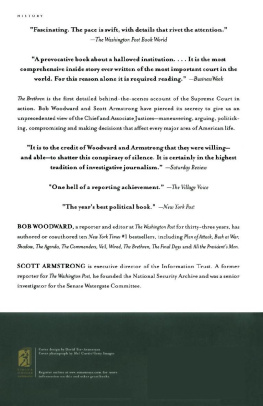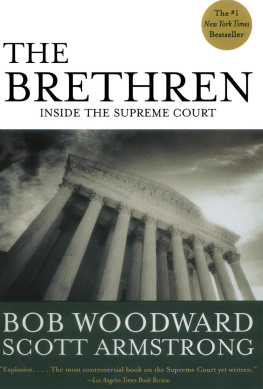The short guide to gender
Kath Woodward
First published in Great Britain in 2011 by
Policy Press University of Bristol 1-9 Old Park Hill Bristol BS2 8BB UK Tel +44 (0)117 954 5940 e-mail
North American office: Policy Press c/o The University of Chicago Press 1427 East 60th Street Chicago, IL 60637, USA t: +1 773 702 7700 f: +1 773-702-9756
The Policy Press 2011
British Library Cataloguing in Publication Data
A catalogue record for this book is available from the British Library.
Library of Congress Cataloging-in-Publication Data
A catalog record for this book has been requested.
ISBN 9781447319719 ePub
ISBN 9781447319726 Kindle
The right of Kath Woodward to be identified as author of this work has been asserted by her in accordance with the Copyright, Designs and Patents Act 1988.
All rights reserved: no part of this publication may be reproduced, stored in a retrieval system, or transmitted in any form or by any means, electronic, mechanical, photocopying, recording, or otherwise without the prior permission of The Policy Press.
The statements and opinions contained within this publication are solely those of the authors and not of the University of Bristol or The Policy Press. The University of Bristol and The Policy Press disclaim responsibility for any injury to persons or property resulting from any material published in this publication.
The Policy Press works to counter discrimination on grounds of gender, race, disability, age and sexuality.
Cover design by The Policy Press.
Front image kindly supplied by stock.xchng
Readers Guide
This book has been optimised for PDA.
Tables may have been presented to accommodate this devices limitations.
Image presentation is limited by this devices limitations.
Contents
Acknowledgements
I would like to thank Raia Prokhovnik and the Feminist Reading Group at the Open University for such stimulating and useful discussions.
This book also owes a great deal to Sophie Woodward, my co-author of Why feminism matters and my daughter. The experience of working on the book together and our cross-generational conversations were so productive, as well as being very enjoyable.
Introduction
In a very popular UK comedy series, Only Fools and Horses, which started in the 1980s, in one episode one of the main characters becomes a father. He rushes out of the labour ward where his partner has just given birth to their son to greet his brother with the happy news. What is it? asks his brother. Its a little baby, he replies, in a response that elicits loud laughter from the audience. Why is this so funny? We know, of course, that the expected response at this moment is to announce the gender of the infant. It is funny because it is absurd not to realise this. What was the new father expecting? Of course it is a baby, but what everyone wants to know is, is it a girl or a boy?
This is just the start. What happens next makes gender, and babies are born into social worlds that already have rules about what is appropriate and what is not, according to gender. Recognition of the gender of the infant is a key moment in the social marking of identity. Even small babies are expected to wear gender-specific clothing in blue or pink, which still dominates retail babywear outlets. Gender-neutral colours are available for those who wish to rebel or who are perhaps giving a gift prior to the babys arrival. Clothing may seem to be more closely concerned with femininity and masculinity and what one looks like, but gendered clothing signifies gendered identities that have deep social meanings that are far from superficial and can impact powerfully on life chances. Most parents can find out if their baby is a girl or a boy before birth through ultrasound scanning techniques. In some cases this may be for a much more serious reason than knowing which colour clothes to buy. Pregnancies can be terminated because the foetus is the wrong sex. In many situations and cultures, parents want to select the sex of their child and reject one of what is perceived to be the wrong gender.
Gender matters, from the moment we are born and throughout the lifecourse. How does it matter? Gender offers a relatively secure and stable marker of identity in a world beset by insecurities and uncertainties as well as opportunities and possibilities. Gender is mostly classified according to visible appearance, for example by anatomical, embodied characteristics that mark one sex or the other. Any ambiguities are treated as exceptions, when appeals have to be made to more complex and less immediately accessible sources such as DNA. It is the outward appearance of the body that is the first source of evidence of sex and gender. As Pierre Bourdieu (1984) has argued, the body is the only tangible manifestation of the person and sex and gender are enfleshed characteristics of bodies that are key sources of who we are. As has at times been argued, it may, however, be the case that sex is one thing and gender another, as is explored further in . What is important is the myriad ways in which sex and gender are invoked and the times and places in the lives of human beings when gender is seen to matter and is the basis for the actions that we are permitted to take and the lives we are allowed to lead; for what we can do and what we cannot.
At different times and in different places, gender matters in different ways. Gender is not just a description, it is also used as a concept that can provide ways of explaining social relations, equalities and inequalities among and between people whose social situations may be very similar or differ greatly. There is some continuity in the idea of gender, in that all human societies have some recognition of differences that are based on gender and these differences are most commonly divided into one of two categories women or men although late modernity has seen more acknowledgement of transgender, intersex and more complex ideas about gender.
This guide looks at gender as a key concept that has become increasingly important across a range of disciplines and in interdisciplinary studies as a means of understanding social relations and divisions and at the connections between sex and gender. Developments in the field of gender studies have led to the articulation of a range of dimensions of difference and gender studies have provided the impetus for new ways of thinking about social relations. Historically, there has been a shift from womens studies to gender studies, which is part of the explanatory framework of the guide, but the emphasis is on asking the right questions about what is happening, exploring the evidence and using theories and concepts to address them in ways that make sense of the social world of which gender is an important component.
Putting gender on the agenda presents an outline of the field and highlights key questions that are addressed in the guide. What is meant by the term gender and how is it used? What sort of evidence is there that supports the claim that gender is a key determinant of inequalities and of social experience? How did gender enter the field as a concept used to explain social divisions? Why does gender matter? This chapter maps out some of the history of the debates and the links between theory and activism, especially in the context of the womens movement and the role that feminisms have played in putting gender on the agenda, politically and in policy making and practice, as well as in developing theories through which to understand and explain gender relations.




















